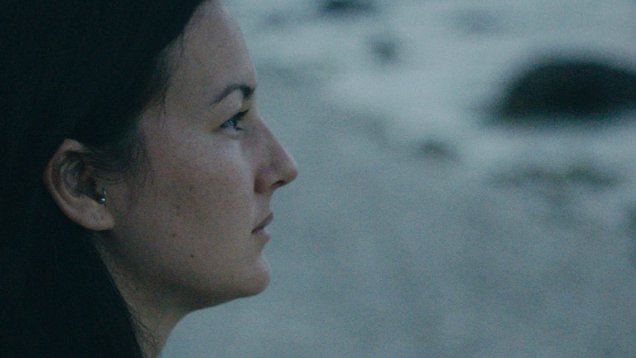Christmas Island documentary Island of the Hungry Ghosts is profoundly cinematic

On the ground at the Adelaide Film Festival, critic Blake Howard takes an early look at a profoundly moving film exploring life on Christmas Island.
The opening of Australian documentary Island of the Hungry Ghosts is shrouded in the darkness of wilderness, a squall of the simmering sounds of thick foliage and fauna bubble before a commotion. A person emerges scaling the wire walls surrounding the halogen-lit facility before screaming into the brush. The beastly snarls of freedom, the camera shaking in desperate pursuit. An animal is free. In this case, a human ground into something primal.
This is a portrait of Christmas Island, the Australian territory located off the coast of Indonesia. It considers island life, infamous red crab migrations, folklore and at the forefront family: that of a community trauma counsellor Poh Lin Lee and her husband and two girls. This tangential take on Australia’s despicable offshore detention practises approaches the subject with abstract caution.
Island of the Hungry Ghosts has a profoundly cinematic quality. In the quieter scenes, the framing is soft, nurturing subjects to maximise intimacy. Director Gabrielle Brady attempts a kind of espionage here, being allowed into the most intimate sessions, into family moments. In both though, there’s restraint to not overwhelm the audience with confronting confessionals. There’s movement too, in cars with the subjects, hovering alongside their activities and then detached expeditions to quietly observe the jungle.
Island of the Hungry Ghosts presents conflicted tales of migrants and migrations. Christmas Island’s very formation seems to have a hostile quality. Volcanic coast has been crafted into a sea of black teeth that snarl and hiss with the pounding water. Folklore on the island, we hear through the parents’ bedtime stories, speaks of the dragon “Daga” who shaped the island to ward off unwanted travellers.
In this rippling jungle, huge crustaceans make their way across the volcanic landscape to spawn. This movement through jungle to the ocean has been occurring alongside cycles of the full moon for hundreds of thousands of years. We watch local conservationists using downed branches to create bridges over drains and shepherding traffic through crowds of crabs coating the roads to assist with natural migration.
The contrast of the fury and relief of those opening moments are quickly offset by meditative counselling sessions. Lee, the trauma specialist, uses a pristine sandbox and a variety of figurines to subtly use the innocuous tactile playsets to give participants the safest space to share. Poh Lin Lee struggles to support these asylum seekers because of the increasingly unbearable uncertainty of their time in the facility.
During an offering ceremony, we hear Poh Lin explain to her daughter that original Chinese settlers one hundred years earlier had passed away without receiving the proper death ceremonies. The island, therefore, is full of the eponymous “hungry ghosts.”
It is said that areas that experience great trauma have a kind of unquantifiable stain. The Auschwitz concentration camp, to this day, rarely has birds fly over it. One can’t help but feel a similar darkness concealed by this staggering wilderness. While a subject like imprisonment and the exile of asylum seekers could succumb to Alan Jones style bullying, Island of the Hungry Ghosts chooses an altogether different route. It’s a lure; a tug at your very soul.

















